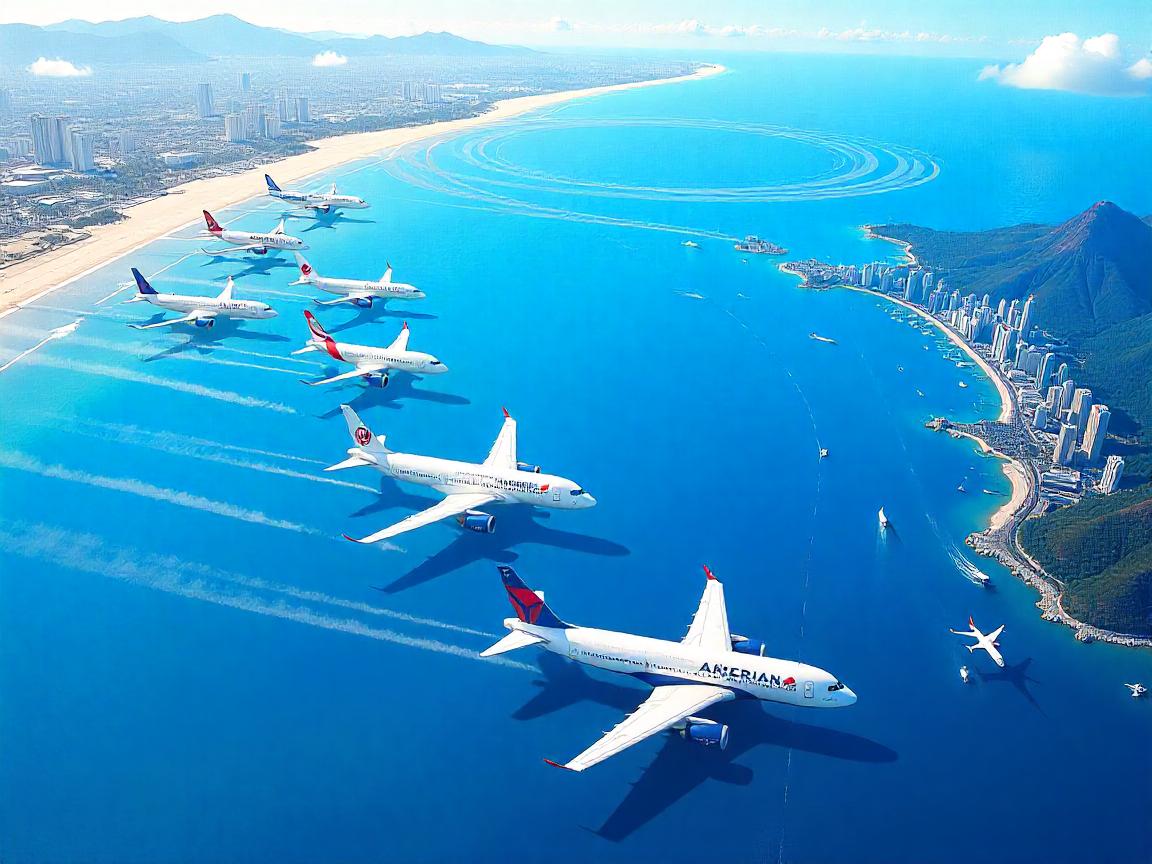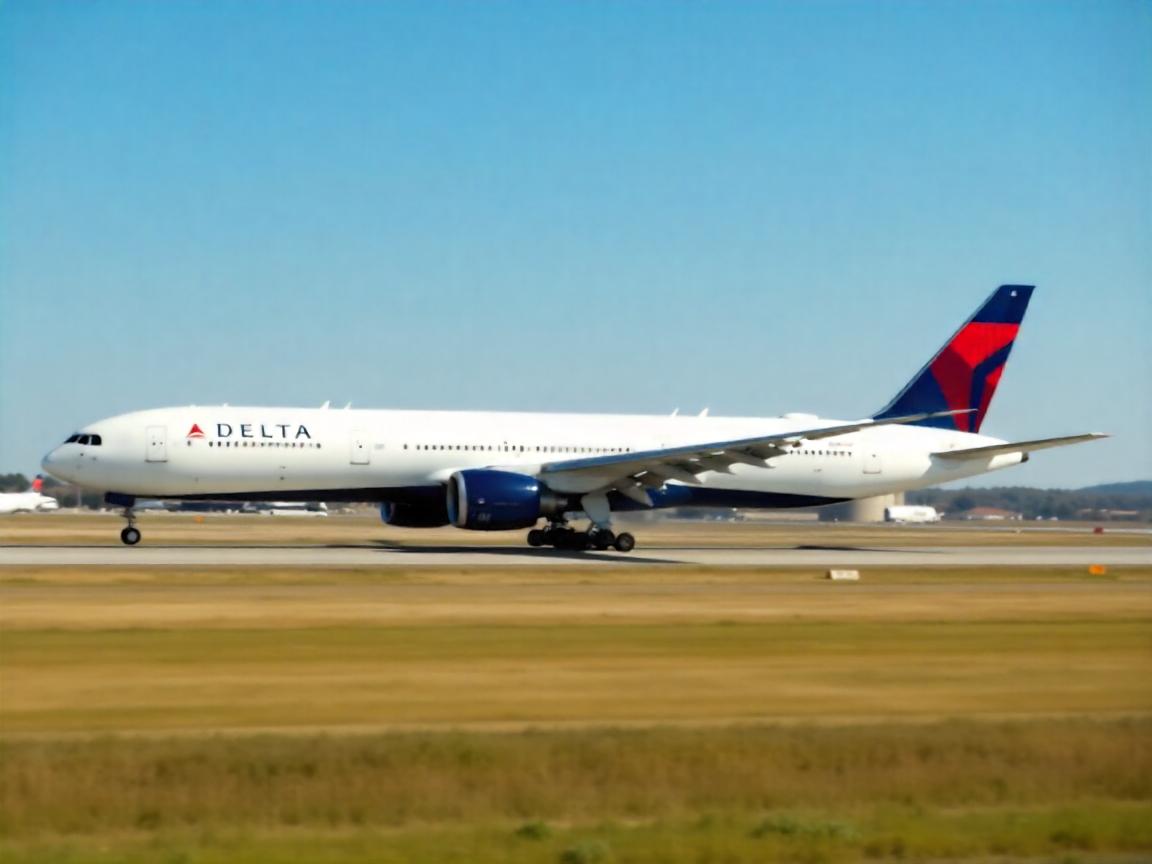Saturday, July 12, 2025
Delta Air Lines is preparing to shake up the skies with a bold move that’s capturing the aviation world’s attention. The carrier is plotting a return to the bustling Los Angeles to Hong Kong route, stepping into a fierce arena dominated by industry heavyweights like Cathay Pacific, United, American, Japan Airlines, Asiana, and EVA.
For travelers, this could mean more choices, competitive fares, and fresh connections between two iconic global hubs. But for Delta, it’s a calculated risk in one of the world’s most challenging long-haul markets. The route is already crowded with airlines offering established networks and loyal customer bases.
Delta’s re-entry signals confidence in Asia’s travel rebound and a desire to carve out its share of trans-Pacific traffic. As the airline readies its fleet for this ambitious relaunch, all eyes are on how it plans to compete, thrive, and redefine the journey between Los Angeles and Hong Kong.
Delta Air Lines is on the brink of a daring return to one of Asia’s most competitive corridors. The carrier is reportedly preparing nonstop flights from Los Angeles International Airport to Hong Kong, marking its first service to the city in more than eight years.
If confirmed, this move could transform how travelers connect between North America and Asia and may ripple across airlines, airports, and the broader tourism industry. For Delta, the stakes couldn’t be higher.
The High-Stakes Play for Hong Kong
Delta’s retreat from Hong Kong in 2018 felt final at the time. The airline redirected its focus through Seoul Incheon, leaning on its joint venture with Korean Air to manage Asian traffic. Now, whispers of a relaunch suggest Delta wants back into a lucrative market it once abandoned.
But Hong Kong is no easy prize. The city’s aviation scene is fiercely contested. United Airlines runs two daily flights from LAX, while Cathay Pacific dominates with three daily services, anchored by deep regional connections and alliances.
American Airlines tried this route but pulled out, burned by weak demand and poor performance. Delta’s return raises a key question: why step back into the ring now, and from Los Angeles rather than Seattle, which has been Delta’s trans-Pacific hub in recent years?
A Strategic Pivot to Los Angeles
Delta’s decision to launch the Hong Kong route from Los Angeles rather than Seattle is turning heads. Despite Seattle’s status as Delta’s Pacific gateway, Los Angeles offers unmatched domestic connectivity. Delta operates over 150 peak daily departures at LAX, giving it a powerful platform to feed long-haul flights.
Moreover, Los Angeles is the U.S.’s critical link to Asian business and tourism. With a significant Asian American population and strong corporate demand, LAX provides a fertile base for an ambitious trans-Pacific route.
However, the decision isn’t without risk. Competition is brutal. Cathay Pacific’s dense network out of Hong Kong allows it to connect passengers across Asia seamlessly. Delta doesn’t have similar partner support in Hong Kong, making it more dependent on origin-and-destination traffic rather than connecting travelers.
The Aircraft Behind the Ambition
The Airbus A350-900 is expected to handle the nearly 7,300-mile journey. It’s a workhorse designed for long-haul routes with fuel efficiency and passenger comfort. For Delta, deploying the A350 here signals confidence.
The A350’s range allows Delta to cover the LAX-Hong Kong route without payload penalties, crucial for profitability. Delta’s investment in this aircraft fleet is part of its broader strategy to modernize long-haul operations and reduce costs per seat-mile.
Yet fleet flexibility remains an issue. Delta has only so many A350s, and deploying them to Hong Kong could mean fewer aircraft available for other crucial routes, especially in the South Pacific or Europe.
Meanwhile, the Airbus A330-900neo, another Delta widebody, lacks the range for this demanding route, locking Delta into limited aircraft options.
Hong Kong’s Changing Tourism Landscape
Hong Kong’s tourism market is recovering steadily after years of pandemic restrictions and political tension. Visitor arrivals are climbing, and the city is eager to restore its reputation as a top Asian hub for business and leisure.
For Delta, re-entering Hong Kong might tap into pent-up demand. Both business travelers and tourists are looking for new options as Asia reopens fully to international travel.
However, the city’s recovery remains fragile. Economic shifts, lingering geopolitical tensions, and shifting traveler preferences could impact passenger numbers. For Delta, the challenge will be attracting enough premium passengers to sustain such a long route.
Moreover, with fierce price competition from United and Cathay, Delta must balance pricing to fill seats without eroding yields.
Can Delta Win in a Crowded Market?
Delta’s move into Hong Kong faces strong headwinds. The airline previously struggled to make routes work from Seattle, Detroit, and even Los Angeles. Each attempt fell short of expectations, due to insufficient connecting traffic and intense competition.
Unlike United or Cathay Pacific, Delta doesn’t have a vast regional network radiating out of Hong Kong. Without partners to funnel passengers from secondary cities across Asia, Delta could be fighting for a smaller piece of the pie.
Travelers today expect smooth connections and competitive pricing. Delta may have the brand strength and aircraft to compete, but it needs more than hardware. It needs passengers willing to choose Delta over entrenched rivals.
Why Delta’s Move Matters for Global Tourism
The impact of Delta’s potential Hong Kong return stretches far beyond airline boardrooms. A new U.S.-Asia nonstop route can influence tourism flows, hotel occupancy, and regional economies.
California tourism authorities could benefit from an influx of Asian visitors drawn by new flight options. Hong Kong’s hotels and attractions stand to gain fresh momentum if Delta successfully brings in more American travelers.
Moreover, travel agencies, corporate travel planners, and global logistics networks watch closely. More air links mean greater business flexibility and potentially lower costs for cross-border travel and trade.
If Delta succeeds, it could signal renewed confidence in Asia’s tourism rebound—and inspire other carriers to launch new routes. Conversely, if the route falters, it could serve as a cautionary tale about the limits of airline expansion in a volatile market.
Delta’s High-Stakes Return: Can It Compete as US Carriers Battle for the Crowded LAX–Hong Kong Skies?
A New Chapter in the Trans-Pacific Saga
There’s a buzz in the aviation world as whispers grow louder about Delta Air Lines plotting a dramatic return to Hong Kong. If this materializes, it will mark Delta’s first flight to the city in more than eight years—a bold move into one of the world’s most competitive air corridors.
Delta’s decision isn’t happening in a vacuum. The LAX–Hong Kong route is already a fierce battleground dominated by giants like United Airlines and Cathay Pacific. The question is, can Delta carve out its own share of the market—or will history repeat itself with another retreat from Hong Kong’s skies?
United Airlines: Doubling Down on Hong Kong
United Airlines has become a formidable force in the LAX–Hong Kong market. The carrier already operates two daily nonstop flights, leveraging its fleet of Boeing 787-9 Dreamliners to bridge the nearly 7,300-mile gap between Southern California and Asia’s iconic gateway.
United’s advantage lies in its consistency. While others have come and gone, United has maintained a presence on this route, building customer loyalty and brand recognition. It’s also positioned to connect travelers beyond Hong Kong to other Asian destinations through partnerships and codeshare agreements, although not as extensively as some Asian carriers.
Their recent move to add a second daily flight shows confidence in demand recovery and a clear strategy to cement its dominance in the trans-Pacific market.
Cathay Pacific: The Local Heavyweight
If there’s an airline synonymous with the Hong Kong market, it’s Cathay Pacific. The city’s hometown airline operates three to four daily flights between LAX and Hong Kong, using a fleet mix of Boeing 777-300ERs and Airbus A350-900s.
Cathay’s power comes from deep regional connectivity. Travelers flying Cathay don’t just land in Hong Kong—they gain access to a sprawling network that links them to cities across China, Southeast Asia, and beyond. This makes Cathay immensely attractive to both leisure and business travelers who value seamless connections.
Moreover, Cathay’s reputation for high-quality service and strong loyalty programs makes it a tough competitor for any airline hoping to enter or expand in this market.
American Airlines: The Missing Player
Interestingly, American Airlines is absent from the nonstop LAX–Hong Kong battle today. The airline once operated direct flights but withdrew years ago, citing poor route performance and financial losses.
American’s absence leaves a noticeable gap in the U.S. competitive landscape. While American remains strong across many trans-Pacific routes, Hong Kong proved a tough nut to crack. Unless market dynamics shift significantly, American appears content to stay out of this crowded ring—for now.
This vacuum presents both an opportunity and a warning for Delta. If American couldn’t sustain profitable operations, can Delta overcome similar hurdles?
Delta’s Calculated Gamble
Delta’s rumored return to Hong Kong from Los Angeles signals a calculated, strategic shift. In the past, Delta funneled much of its Asian traffic through Seoul Incheon via a joint venture with Korean Air. However, a nonstop LAX–Hong Kong service would give Delta direct access to a lucrative market and allow it to capture passengers who prefer a nonstop journey over connecting flights.
Delta plans to deploy the Airbus A350-900 on this route—a state-of-the-art aircraft known for fuel efficiency and passenger comfort. This is no small investment. It signals Delta’s belief that there’s room to disrupt the market and that they can capture enough premium and economy demand to justify the route.
Yet history looms large. Delta’s past attempts at Hong Kong flights from Detroit, Seattle, and Los Angeles failed to achieve lasting profitability. The airline must prove that conditions have changed enough to support a sustainable operation this time around.
Connectivity Challenges and Competitive Pressures
Unlike United and Cathay, Delta faces a significant connectivity disadvantage. Cathay Pacific, in particular, benefits from Hong Kong’s position as a regional hub, funnelling passengers across Asia. Travelers flying Delta might reach Hong Kong comfortably, but beyond that point, connections become trickier due to the lack of a partner network based there.
This reality means Delta would likely depend heavily on point-to-point traffic—people specifically traveling between Los Angeles and Hong Kong. That’s a narrower market segment, vulnerable to price wars and shifting demand patterns.
United’s dual daily service and Cathay’s multiple frequencies offer travelers flexibility that Delta would initially struggle to match. Corporate travel contracts, frequent flyer loyalty, and brand perception also heavily favor the established players.
Market Timing and Opportunity
Despite these challenges, there’s reason for Delta to be optimistic. Hong Kong’s tourism and business travel segments are rebounding after years of pandemic restrictions and political uncertainty. International visitors are gradually returning, and the city is eager to reclaim its status as a global business and tourism hub.
Moreover, Los Angeles is an excellent launchpad. Delta’s domestic network at LAX is vast, with over 150 peak daily departures, allowing it to feed passengers into long-haul services efficiently. If Delta can tap into the diverse Los Angeles market—including strong demand from Asian-American communities—it might carve out a sustainable niche.
The move could also align with Delta’s broader strategy to enhance its Pacific presence without relying solely on connecting traffic through Seoul.
Why It Matters for the Travel Industry
Delta’s potential Hong Kong relaunch isn’t just about one airline’s ambition—it’s about the evolution of trans-Pacific travel itself. A successful Delta operation could shake up fares, inject fresh competition, and expand choices for travelers. It could also signal growing confidence in Asia’s tourism recovery, encouraging other airlines to revisit paused routes or launch new services.
For Hong Kong, Delta’s return would bring more American tourists, boosting hotels, restaurants, and local attractions. California’s tourism sector could also benefit from increased Asian inbound traffic, feeding spending into hotels, theme parks, and retail businesses.
However, if Delta’s gamble falters, it would reinforce the harsh realities of ultra-long-haul aviation economics, where even major players can’t always turn high-profile routes into profit.
The Sky’s the Limit—or the Ceiling?
The LAX–Hong Kong corridor remains one of the world’s most prestigious and challenging air routes. Delta’s rumored comeback adds another layer of intrigue to a market already full of giants.
Success would grant Delta a prized link into Asia’s business and leisure heart. Failure would be a costly lesson, echoing past retreats.
The world will watch closely to see whether Delta can rewrite its story in Hong Kong skies—or whether history is destined to repeat itself.
A Calculated Gamble With High Rewards
Delta is playing a high-stakes game. The LAX-Hong Kong route is both a symbol and a test. It’s a symbol of ambition—a statement that Delta wants to reclaim a piece of the Asia travel market. But it’s also a test of whether Delta can compete without the connecting traffic that gives rivals an advantage.
If Delta manages to fill planes and maintain strong fares, it could reshape how Americans travel to Hong Kong and beyond. But if the economics falter, the airline may once again retreat, leaving competitors to rule the skies.
The Travel World Holds Its Breath
The aviation industry is watching Delta closely. A successful Hong Kong route would underscore confidence in the Pacific market’s recovery. It could unlock fresh demand, inspire competitive fare wars, and stimulate tourism on both sides of the ocean.
Yet uncertainty remains. The stakes are massive—not just for Delta, but for travelers, tourism boards, and the broader global economy. As 2025 unfolds, Delta’s gamble on Hong Kong could define the next chapter in trans-Pacific travel.
For now, travelers and industry insiders wait for the official announcement, ready to see whether Delta’s bold move will soar—or stumble.



